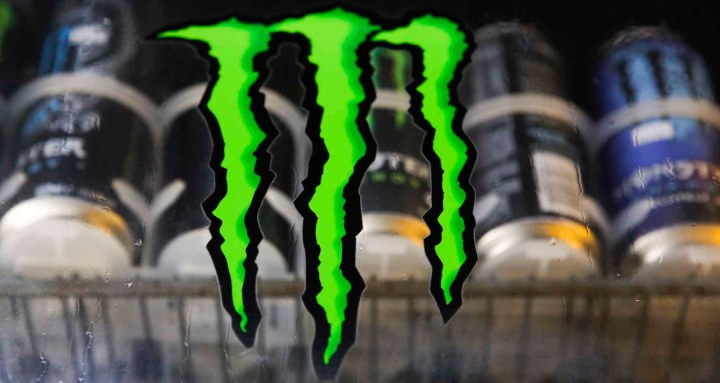BUSINESS REFLECTION
After the Bell: The secret of success behind Monster energy drinks

It’s the season to be patriotic with the Boks and so on, and that provides an opening to write a quick note about two Wits students who haven’t got the recognition they deserve in SA.
If I said to you, two South Africans started and still run a company that has, over a 30-year time scale, outperformed all the companies on the S&P 500, could you name that company? Until recently, I couldn’t.
The company is the Monster Beverage Corporation and the founders are Rodney Sacks and Hilton Schlosberg, who both emigrated to the US in the 1980s. To describe them as founders is not quite accurate; they bought a struggling beverage company, the Hansen Natural Corporation, for $1.71-million in 1990.
The company is now worth $55-billion and each of the founders of the renewed company owns about 8% of the stock, so on this basis alone they are probably worth around $5-billion each, which would make them the fourth-richest South African-born billionaires out there, behind Elon Musk, Patrick Soon-Shiong and Johann Rupert. (I presume they long ago took US citizenship.)
The obvious question is: How did they do that? And the answer is, of course, a cocktail of good fortune and good judgement.
Monster is now the largest, or perhaps the second-largest energy drink in the world, with the most obvious competition being Red Bull (it’s difficult to measure exactly because Red Bull is not listed). And, of course, the company doesn’t just sell Monster; it sells a whole range of energy drinks including Burn, NOS, Full Throttle, Relentless, Mother, and many others. And it sells myriad versions of Monster, including a coffee version, which seems to be ridiculous overkill.
Also, an energy drink called Mother is kinda weird, but energy drinks are now a huge and expanding market, so there is lots of experimentation going on and maybe both of our homeboys had energetic mothers. The latest kid on the block is Celcius, not owned by Monster, which is marketing itself as a fitness product. There are hundreds of new drinks appearing all the time, including one which has the flavour of Swedish fish. I am not making this up.
TBH, I don’t know much about the energy drink market but, fortunately, the very excellent Bloomberg podcast Odd Lots, presented by Tracy Alloway and Joe Weisenthal, recently investigated the subject, and reading between the lines, it’s easy to guess how Monster gained its prominence.
The critical aspect was to be both like and unlike the market leader and the drink that established the sector, Red Bull. Monster was also launched as an energy drink, in the sense that it is a caffeine-heavy drink aimed at giving you a heady boost. It was unlike Red Bull, in that it was marketed to a slightly more blue-collar audience and the can was twice the size but the price was the same.
The lucky part of it all, it seems to me, is that Monster found itself in the middle of a very fast-growing segment, which has been taking market share away from almost all other drinks for decades. Beer consumption, for example, around the world has been declining in developed markets, but energy drinks have been as peppy as the product itself.
Why is that? It’s hard to know, but people may just be living, on average, more sporty lives. We are sleeping less and being more active, on average, around the world, so it helps to have a product that operates in that space. Are they unhealthy to drink? The big active ingredient is of course caffeine, and US government agency, the National Center for Complementary and Integrative Health, says adults can safely drink four cups of coffee a day in most circumstances. That’s about 400 milligrams of caffeine, and caffeine-based energy drinks usually have about 160 milligrams in a 500ml can. But then again, there is also the sugar and, interestingly, lots of vitamins in many of the drinks. So, for most people, they are probably okay healthwise, but like everything, try not to overdo it.
There is one more thing, which financial analyst Mark Astrachan explained to the Odd Lots hosts, and me, and that is the very powerful link between distribution and sales performance. The big distributors, basically Coke, Pepsi and the beer producers, are always looking for something extra to fill up their distribution trucks. Monster for a time was distributed by Coke and beer maker Anheuser-Busch. But Monster was lured to go with Coke alone, and Coke now has a 20% stake in Monster.
The deal worked out well for Monster because it became an international brand, but it also provided space for a newcomer, because Anheuser-Busch is now distributing Celcius, giving them the big leg-up that Monster got years ago.
One interesting question is: Why haven’t Coke and Pepsi just started their own energy drink brands? The answer is that they tried very hard, but somehow they never got it right. Coke tried to turn Coke into an energy drink and that really failed. It’s weird.
Anyway, cheers to the two Witsies who conquered the world; it must have taken a huge effort but, hey, they presumably had lots of energy drinks on hand along the way. DM

















 Become an Insider
Become an Insider
Great story! Imagine if they’d been UCT grads – they’d still be staring at Table Mountain wondering how much extra they could charge outsiders to stay in their B&B looking at it. Joburgers would have built the top half long ago!
LOL. Swedish Fish is a confectionary brand made by Malaco, often sold in IKEA.